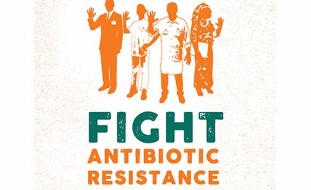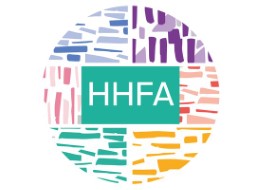Understanding and using WHO guidelines on tuberculosis
Tuberculosis (TB) remains one of the most important transmissible conditions of public health concern in both low- and high-resource settings, and is one of the single most important infectious disease killers. As part of its mandate, the World Health Organization produces evidence-based guidelines on different aspects of TB prevention, screening, diagnosis and treatment. Since several years, TB guidelines are developed using using the GRADE method (Grading of Recommendations Assessment, Development and Evaluation).
All healthcare personnel involved in TB prevention and care need to have appropriate knowledge and skills on how to use WHO TB guidance. The training course on Understanding and using WHO guidelines on tuberculosis were developed for persons with different levels of experience in using WHO TB guidelines. This e-Learning package consists of 8 modules, which include video lectures and downloadable presentations that reflect the latest information and methods.
Photo credits: WHO/G.Hampton
Overview: Since 2009, WHO has produced tuberculosis (TB) guidelines using the GRADE method (Grading of Recommendations Assessment, Development and Evaluation). More recently, the WHO Global TB Programme has consolidated its TB guidelines into a modular series, including access to a recommendation map, focused on online access in contrast to paper documents. Evidence-based guidance across the continuum of care is instrumental to the global drive to end TB, a leading infectious disease cause of death in the world today despite being largely preventable and curable. This is enshrined in the WHO End TB Strategy for 2016-2035 endorsed by all Member States. Efforts to keep consolidated guidelines updated as “living guidelines” are important for WHO so that practice is based on the best available, latest evidence.
This course explains how TB guidelines are developed by WHO, how the GRADE approach relates to TB guidelines, how to interpret the certainty of evidence and strength of recommendations, how WHO TB guidelines can be accessed, and how guidelines can be adapted to the local context.
What you’ll learn; Who this course is for
Describe the general process of WHO TB guideline development
Describe what a WHO TB guideline includes
Access WHO TB recommendations
Describe the certainty of the evidence and what it means
Explain strong and conditional recommendations
Explain the rationale for adapting guideline recommendations
Guideline users and teams supporting guideline development
Course contents
Module 1: How are WHO tuberculosis guideline recommendations developed?:
After completion of this module, learners will be able to describe the general process of WHO tuberculosis guideline development and what a guideline includes, from questions to recommendations
Module 2: Accessing WHO tuberculosis recommendations. An overview of the resources and tools:
After completion of this module, learners will be able to describe how and where to access WHO tuberculosis recommendations and what tools can be used to implement them
Module 3: An overview of GRADE in the context of WHO tuberculosis recommendations:
This module has two sections: 3a is for guideline developers, and 3b for guideline users. After completion of module 3a), learners who are tuberculosis guideline developers will describe what GRADE is and its significance for TB guidelines. After completion of module 3b), learners who are lay user of a recommendation will describe what GRADE is and its significance for TB guidelines.
Module 4: Understanding WHO tuberculosis recommendations focusing on tests:
After completion of this module, learners will be able to describe the key considerations about using recommendations about tests for tuberculosis and how they differ from recommendations about drugs and other treatments in their development and interpretation
Module 5: Understanding strong and conditional recommendations in WHO tuberculosis guidelines:
After completion of this module, learners will be able to explain the difference between strong and conditional WHO tuberculosis recommendations and interpret them
Module 6: Understanding high, moderate, low and very low certainty evidence in WHO tuberculosis guidelines:
After completion of this module, learners will be able to explain the meaning of the certainty of evidence of WHO tuberculosis recommendations and interpret it
Module 7: Using GRADE Adolopment to adapt or adopt WHO tuberculosis guidelines:
After completion of this module, learners will be able to explain why guideline adaptation provides advantages and how recommendations can be adapted, adopted or created from an existing WHO tuberculosis guideline
Module 8: Using WHO tuberculosis recommendations – do I need to contextualize the recommendations?:
After completion of this module, learners will be able to describe the key factors to consider in and the rationale for contextualizing WHO tuberculosis guideline recommendations. This will complete the training course and they can go to the Final Assessment.
Final Assessment
User Reviews
Be the first to review “Understanding and using WHO guidelines on tuberculosis”
You must be logged in to post a review.







There are no reviews yet.